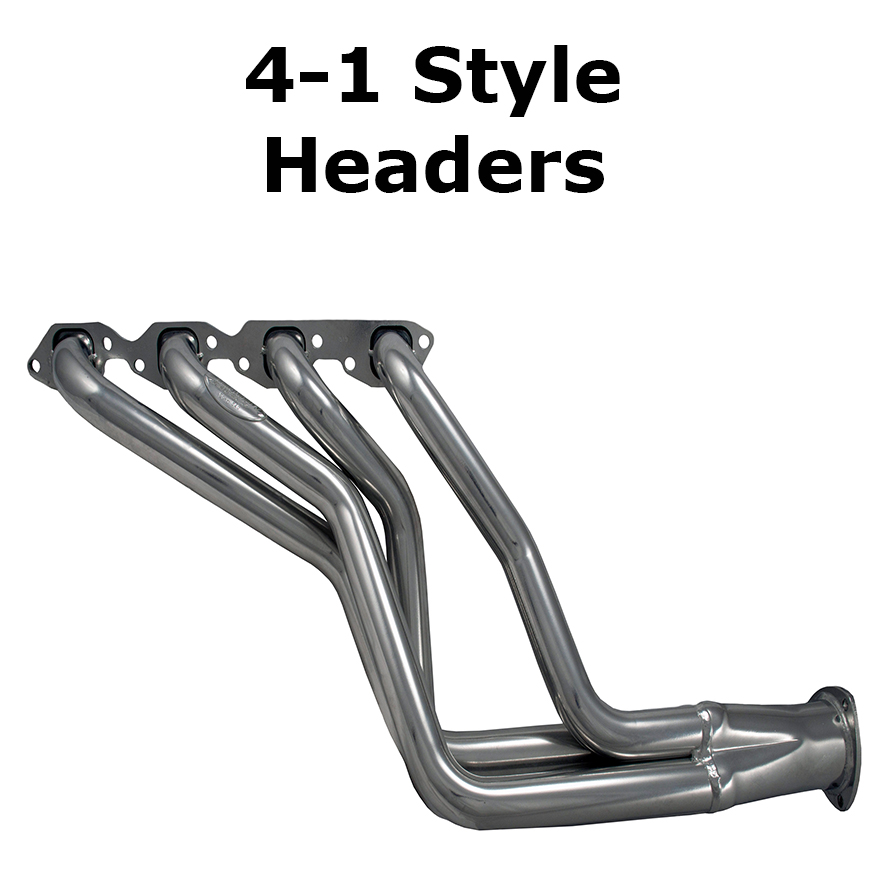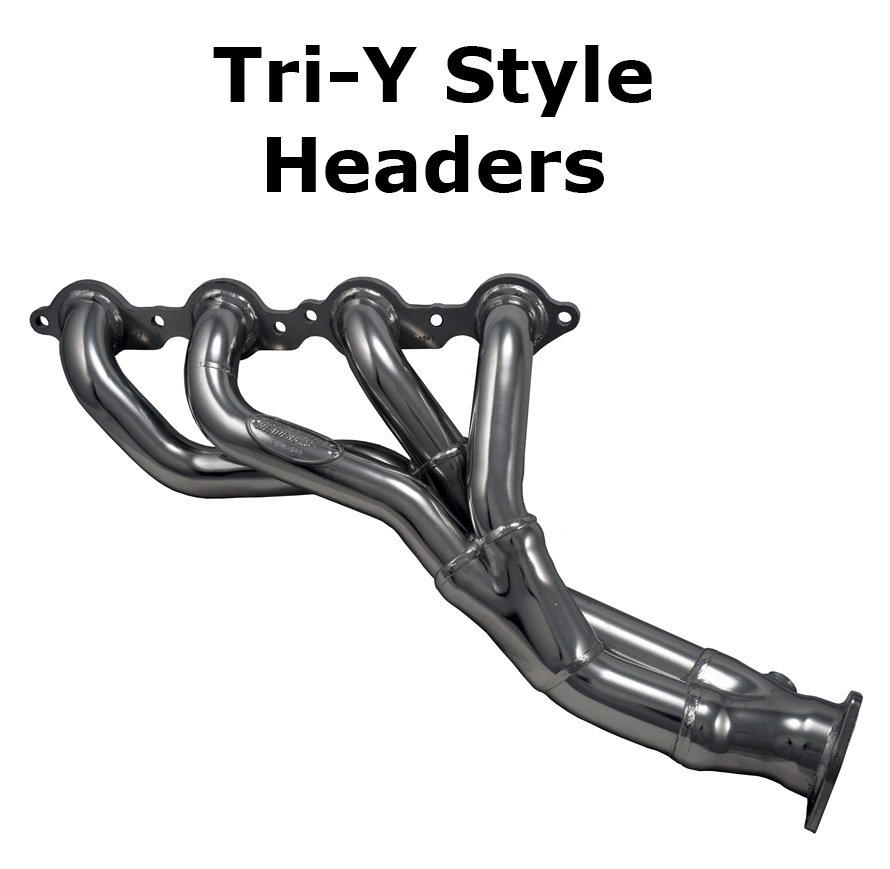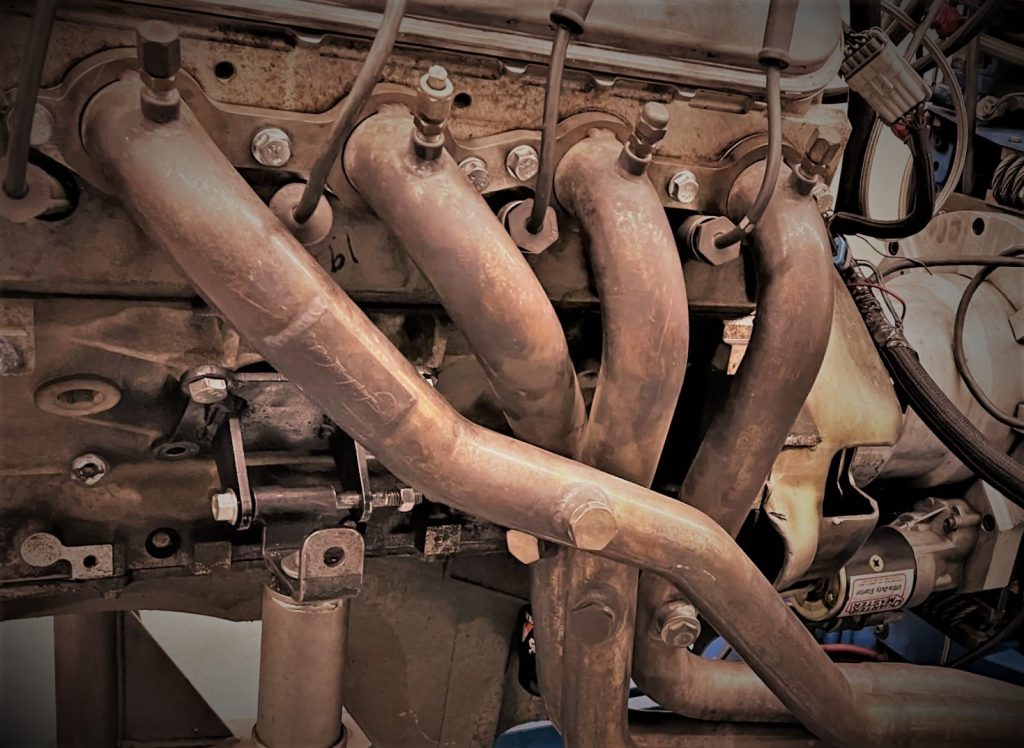Q: Can you explain the difference between “4-1” and “Tri-Y” collectors?
…
A: The collector is where the primary tubes merge together. 4-1 and Tri-Y are the two main types of collector design.
The 4-1 design brings all four primary tubes into one collector at the same point.

The Tri-Y design (or 4-2-1) merges the four primary tubes into two secondary tubes. Then, the secondary tubes are merged into a single collector.
…

How is it measured?
The two dimensions that affect the collector are length and diameter.
- Collector length is measured from where the primary tubes end, to the flange where it meets the rest of the exhaust system.
- Collector diameter is the inside diameter of the collector tube.
…
How does collector design affect performance?
The scavenging effect created by the headers is what makes power.
Scavenging is created by maintaining the speed of exhaust flow. When the high-speed pulse of exhaust from the primary tube reaches the larger collector, it slows down.
Changing the size of the collector will affect how much the exhaust slows. The collector diameter is based on the primary tube diameter. Larger primaries require a larger collector. The collector can be tuned by changing its length.
Just like the primary tubes, the size of the collector will affect the torque curve:
- Larger collectors will make more torque below the peak torque rpm.
- Smaller collectors will make more torque above the peak torque rpm.
Tri-Y style headers do a good job maintaining flow velocity. Exhaust from one tube rushing past the “Y” can help scavenge air from the other tube.
Tri-Y headers often make better low-end torque than similar 4-1 headers. If you need headers for a tow rig or engines that run mostly under 8,000 rpm, Tri-Y headers could be a good option.
Changing collectors can be difficult and time consuming. Racing vehicles with an open exhaust sometimes run collector extensions. They start long and are cut down until the power band is perfected. This should be done under controlled conditions like a dyno or measured trap speed.


[…] Q: Can you explain the difference between “4-1” and “Tri-Y” collectors? … A: The collector is where the primary tubes merge together. 4-1 and Tri-Y are the two main types […] Read full article at http://www.onallcylinders.com […]
If you really want power go for truly tuned exhaust headers.
Another words… You work off your opponent cylinders . If it a 4 cylinder you want your exhaust pipes to equal 5
1&4/2&3….they scavenge off each other, six cylinder = 7…Eight = nine ect.
Look at a formula 1 engines exhaust manifolds they look like spaghetti and that why they can pump 700/800 horsepower out of a 3.0 liter engine. Not only that but you can hear it!
I found this out years ago with a 1600cc Volkswagen engine…. First I had a regular 4 into 1 header…big difference than stock exhaust system. Then someone told me about the EMPI tuned header which was 1-4 / 2-3(=5)…. OVERNIGHT DIFFERENCE!…. It had Power, Torque like you would not believe. Just that simple change made all the difference.
Unfortunately they don’t offer this type of system… It would have to be custom made per engine/ per vehicle.
Finally, Simone who understands that 4 into 1 isn’t “tuned”, because they are 4 into one, snd work in a different power range.
Lamborghini are using try Y headers on their screaming V 12 engines
Ty. Thank you for your input. I hope I get a chance to try this out. Cov19 and all. I have accepted the fact that I will be fabricating my next set of headers due to my unique combination of motor and body. 540 in a 95 4×4 Suburban SAS and 18″ lift.
When sizing tri Y headers do I try to size secondary and collectors to have the area the same as the sum of the tube areas feeding it or can I reduce the size because the pluses are hitting the pipes at different times ? Also is there an optimum angle merge collectors should enter at or just stay below 15 degrees included angle as in aerodynamics because laminar flow will tear from the surface and cause turbulence beyond that angle ?